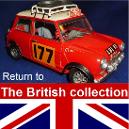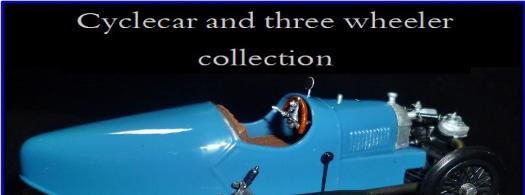
1935 Morgan Supersports “Barrelback”
A Morgan is not a three-wheeler; a Morgan, is a Morgan.
Henry Frederick Stanley Morgan (or HFS as he came to be known in the motoring world) bought his first car in 1902 at the age of 21, and in 1909, at the age of 28, designed and built his first single-seat three-wheeled experimental car. HFS could never have dreamed that he would become one of the world’s major manufacturers of three wheel cars. His father had put up £3,000 and to open the garage in Malvern and shortly after a second in Fore Street, Worcester.
Morgan's fortune really belongs to two influences, racing, and government road tax laws. In 1913 A Morgan won the inaugural Cyclecar GP at Amiens in France and during WWI Britain's fighter ace hero Albert Ball bought a Morgan and said driving a Morgan was “the closest thing he had found to flying”. These events led to the naming of the 'Grand Prix' model (1913 to 1926), and Ball's comment being honoured after his death with the use of the name “Aero” (1919 to 1934).
The government Tax relief on small cars also allowed three-wheeled cars to be licensed as motorcycles, with low insurance costs accompanying low road fund licence costs, made the Morgan an affordable car for the younger drivers and small families. Morgans might have run on three wheeled chassis but the variety of bodywork styles was not compromised by this. Models ranged from standard fittings to the deluxe versions, 4-seater family models and even a delivery van.
The Morgan Super Sports is low and purposeful, it's low centre of gravity and good handling is aided by the simple front mounting of the JAP, John Alfred Prestwich, engine. The beautifully rounded radiator housing not only houses radiators but helps start the striking lines of the vehicle. The Chassis is a clever design which promotes stiffness while maintaining lightweight. The driveshaft tube forms a central backbone supplemented by tube front subframe which not only mounts the engine but provides a location for the now famous Morgan 'sliding pillar' independent front suspension. The bodywork is built on a light ash wood sub-frame built by hand for each vehicle.
Later models saw Matchless engines up front, with the Matchless "M" clearly visible, but often mistaken for an M for Morgan. The larger models in later years even featured Ford 993cc sidevalve engines. In all cases it is the rear wheel that is driven via a drive shaft.
Prior to the 1930s Morgans didn't carry a spare wheel at all. These early Super Sports with the "beetle back" tail are now the most desired Morgans on the market. The need for a spare wheel to be carried became a bit of a headache for Morgan. At first “the spare” was put on top of the rear deck for ease of access. This took away the much needed luggage space and effectively ruined the lines of the “Beetleback” car. The 1935 model had a new rear fairing with the spare wheel now being encased within the fairing, and earning the cars the nickname “Barrelback”.



1/16th scale kit
Built by Rod.


The Photo's above show not only the difference in size from 1/24th scale (smaller of the two) to 1/16th scale and the main difference between the 1934 Beetleback and the 1935 barrelback designs.
The Academy 1/16th scale Morgan kit can be traced back to the 1960s Gakken kit. It has been released under numerous labels, including Entex and Minicraft, but in all cases is the same kit in a different box.
Built by Rod in August 1998 this kit is very much a product of its time although it builds nicely and certainly can be built into a very nice representation of the Barrelback Morgan. It is painted with Halfords paints for the main body colours and priming. The additional parks and detail painting was done by brush with Humbrol enamel paints and Revelland Citadel acrylic paints.
I nice touch is the wood effect on the luggage rack of the Barrelback. This is done with an flesh/cream base coat, dark ink random grain stripping over that and finally several coats of Tamiya clear orange paint. By varying the base colour and using more or less clear orange one can achieve a variety of wood effects. More such tips can be found in our articles and projects pages.
RETURN TO :-

